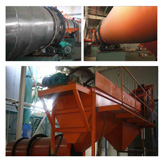Domestic Economic Environment & Policy Environment of Chinese Compound Fertilizer Industry, 2009-2010
14 Jun 2010 • by Natalie Aster

By the end of 2009, there were about 4,500 compound fertilizer producers in China with the aggregate production capacity of over 200 million tons. In 2009, Chinese compound fertilizer production exceeded 50 million tons. Generally, Chinese compound fertilizer producers concentrate in Shandong, Jiangsu, Hubei and Sichuan, etc. Based on the potash fertilizer consumption, Chinese compound fertilizer production reached 50-54 million tons in 2009, including 10 million ton sulfenyl compound fertilizers and 45 million ton chlorine compound fertilizers of various chlorine contents.
Despite the severe overcapacity, Chinese compound fertilizer industry will still import large quantities of NPK (nitrogen, phosphorus and potassium) compound fertilizers every year. On one hand, import compound fertilizers can supplement the deficiency of homemade potash fertilizers. On the other hand, import compound fertilizers mainly dominate the domestic high-end market, which will encourage Chinese compound fertilizer industry to develop high-end products.
According to statistics, in 2007, China imported 1.35 million ton compound fertilizers, which were mainly from Norway (395,000 tons), EU (246,000 tons) and Belgium (140,000 tons); in 2008, the import volume totaled 645,000 tons with 235,000 tons from Norway, 238,000 tons from Finland and 104,000 tons from Belgium; in 2009, the import volume reached 1.31 million tons, which were mainly from Russia (925,000 tons), 253,000 tons from Norway and 91,000 tons from Belgium. According to the import volumes in 2007-2009, the import NPK compound fertilizers were mainly nitro-compound fertilizers. Import compound fertilizers have dominated the domestic high-end compound fertilizer market.
Chinese new national compound fertilizer standard GB15063-2009 Mixed Fertilizer (Compound Fertilizer) is implemented since June 1st, 2010. The new standard further defines the application scope of compound fertilizers; adjusts the percentage of water-soluble phosphorus in available phosphorus in high-concentration products; adds the warning marks for chlorine content indicator and some other products; determines the nitrogen, phosphorus and potassium contents by automatic analysis instruments and the test method for biuret content; changes the water capacity standard to the ex-factory testing data. The new standard places significant influence on the development of Chinese compound fertilizer market.
Firstly, guide peasants to utilize fertilizers correctly. Most Chinese peasants possess low educational level. Moreover, the former standard puts forward no requirement or simple requirements on the instruction for use, suitable crops, application scope and points for attention for compound fertilizers. In recent years, quality disputes caused by the inappropriate purchase and use occur frequently. The new standard not only presents the technological requirement on product quality but also Research Report on Chinese Compound Fertilizer Industry, 2010-2011 requirement on the marks on product packages. The marks should help peasants to learn about the characteristics of fertilizers and thus select, purchase and use suitable fertilizers.
Secondly, close the loopholes and standardize the market. Presently, problems like passing chlorine compound fertilizer off as sulfenyl compound fertilizer still exist on Chinese market. The new standard specifies the standards for low, medium and high chlorine content, facilitating peasants in better identifying the fertilizers. Moreover, as semi-diamine compounds are harmful to crops, in the national urea standard, it clearly specifies that the content of semi-diamine compounds should be no more than 1.5%; moreover, the warning marks should be labeled on the packaging containers. The new standard also includes the semi-diamine compound problem into the management of compound fertilizers. All these measures effectively close the loopholes and are favorable for the standardized development of the compound fertilizer industry.
Thirdly, preserve the legitimate interests of producers. The new standard stipulates that the moisture content should subject to the ex-factory test data. In the past, the moisture content is an indicator that will easily cause disputes. During the storage and transportation, due to damp conditions (in the rain or water) or improper preservation, the moisture content may be overproof. As a result, during the intermediate quality detection by quality control departments, manufacturers may suffer punishment.
However, producers insist that the moisture content is standard when leaving the factory and it is raised during the circulation segment. This will bring about disputes between quality control departments and producers. Now the new standard specifies that the moisture content should take the ex-factory test data as the criterion. No detection is needed during the circulation segment. This is favorable for producers.
The transition period for the implementation of the new standard is six months. According to the new standard, ex-factory products should be in accordance with the standards since the day of implementation. After six months, namely December 1st, 2010, the compound fertilizers in the market are prohibited from being marked with GB15063-2001 Mixed Fertilizer (Compound Fertilizer). The new standard will not influence the compound fertilizer market greatly in the short run. Nevertheless, in the long run, it provides the standards for the sound development of Chinese compound fertilizer market.
More detailed information on Chinese Compound Fertilizer Industry can be obtained from “Research Report on Chinese Compound Fertilizer Industry, 2010-2011” published at MarketPublishers.com
Source: MarketPublishers, Ltd.
Analytics & News
